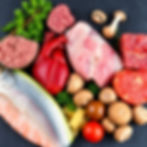The Rising Trend of Making Your Own Dog Food: Benefits, Challenges, and What You Need to Know
- Joseph Wharram
- 4 minutes ago
- 6 min read
Introduction: The Rise of the Homemade Dog Food Movement
Over the past decade, a noticeable shift has been taking place in the way people feed their pets. What was once the niche practice of a handful of dog owners has now grown into a widespread movement: making your own dog food. This change is fueled by growing awareness of pet nutrition, a desire for greater control over ingredients, and mistrust of mass-produced pet foods. From suburban kitchens to urban apartments, more dog owners are donning aprons and preparing meals from scratch for their four-legged companions.

The trend is not just anecdotal. Market research firms and pet industry analysts report steady growth in interest around homemade and fresh dog food diets. Online forums, social media groups, and YouTube channels devoted to canine cuisine now attract millions of followers. Search trends show a spike in phrases like “DIY dog food recipes” and “raw dog diet” year over year. This is more than a fad—it’s a cultural shift in how we think about feeding our pets.
But like any movement that grows quickly, making your own dog food comes with both opportunities and challenges. While the benefits can be significant, there are also nutritional risks, time demands, and cost considerations to weigh carefully.
In this post, we’ll dive into the trend, examine why it’s growing, look at the advantages it offers, and explore the potential pitfalls you need to avoid.
1. Why the Trend Is Growing
Several key factors are driving the rise of homemade dog food:
1.1 Increased Awareness of Pet Nutrition
The modern pet owner is far more informed than in decades past. Thanks to easy access to scientific articles, veterinary advice, and nutrition blogs, people are learning about the importance of balanced, species-appropriate diets. This growing knowledge often leads to dissatisfaction with mass-market kibble, which can be heavily processed and full of fillers.
1.2 Recalls and Safety Concerns
High-profile pet food recalls—some due to contamination with salmonella, mold, or toxic ingredients—have eroded trust in commercial products. Even premium brands have faced safety incidents. For owners who see their pets as family members, the thought of feeding something potentially dangerous is unacceptable.
1.3 Demand for Fresh, Real Ingredients
Many people now prioritize whole foods in their own diets, avoiding overly processed options. It’s a natural extension to want the same for their dogs. Homemade dog food lets owners use fresh meats, vegetables, and fruit they personally select.

1.4 Rise of “Pet Parenting”
The human–animal bond has never been stronger. Dogs are increasingly considered family members, not just pets. This emotional connection drives a willingness to invest more time and resources into their care—including home-cooked meals.
1.5 Influence of Social Media
Instagram, Facebook, TikTok, and YouTube are full of influencers sharing colorful, fresh, and seemingly gourmet dog meals. These platforms normalize and glamorize homemade pet diets, inspiring more owners to try it themselves.
2. The Advantages of Making Your Own Dog Food
2.1 Control Over Ingredients
The most obvious advantage is knowing exactly what’s in your dog’s food. You can avoid low-quality meats, artificial colors, preservatives, and potential allergens. For dogs with food sensitivities, this is especially important. Reference guides are available to make selection of ingredients this simple and easy.

2.2 Customization to Health Needs
Homemade diets can be tailored to your dog’s life stage, activity level, and any specific health conditions. For example:
Senior dogs may benefit from joint-supporting nutrients like omega-3 fatty acids.
Overweight dogs can be fed lower-calorie, nutrient-dense meals.
Dogs with kidney disease may need protein adjustments.
Knowing what options and the key considerations are, and how to assess your dog's needs are the foundation of home Made Dog Food.
2.3 Fresher Food
Store-bought kibble can sit on shelves for months, sometimes years. Freshly prepared meals are nutrient-rich and free from the oxidation that can degrade fats and vitamins over time.
2.4 Improved Palatability
Many dogs are picky eaters when it comes to commercial food but become enthusiastic when offered a home-cooked meal. This can be a lifesaver for owners of underweight or ill pets who need to stimulate appetite.
2.5 Bonding and Care
Preparing meals for your dog can be a rewarding act of love, strengthening the human–pet bond. It’s similar to cooking for family—because for many people, dogs are family.
3. The Issues and Challenges of Homemade Dog Food
While making your own dog food has clear appeal, it’s not without risks and drawbacks.
3.1 Nutritional Imbalance
This is the most significant concern. Dogs require a precise balance of proteins, fats, carbohydrates, vitamins, and minerals. Deficiencies or excesses can lead to serious health issues over time. For example:
Too little calcium can cause bone problems.
Excess vitamin A can harm the liver.
Imbalanced phosphorus and calcium ratios can affect growth in puppies.
Many DIY recipes found online are not properly balanced according to veterinary nutrition standards.
Nonetheless, numerous homemade dog food recipes are approved by veterinarians and outline a balanced combination of ingredients, including their respective quantities, caloric value, and nutritional content.
3.2 Time Commitment
Shopping for ingredients, prepping, cooking, and storing dog food can take several hours each week. For busy owners, limited batch preparation and cooking can resolve this issue.
3.3. Preparation / Cooking Options
The preparation and method of cooking of ingredients is important to ensure that the nutritional value is not significantly degraded and your dog's ability to digest and absorb the nutrients is optimized.
3.4 Higher Cost
Fresh meats, vegetables, and supplements can be more expensive than commercial kibble. While some owners see it as a worthwhile investment, others may find it financially challenging. Tips on sustainable local sourcing can significantly reduce the financial impact resulting in very cost effective meals.
3.5 Storage and Shelf Life
Homemade meals, when made with properly sourced ingredients, should be free of preservatives, which means they need to be refrigerated or frozen quickly. This necessitates having freezer space, planning meals in advance, and handling them carefully to avoid spoilage.
3.6 Need for Professional Guidance
A veterinarian or a board-certified veterinary nutritionist should assist in creating your dog's diet. Alternatively, specialist publications, developed with scientific guidance and validated by professionals, can ensure that meals are balanced and suitable for your pet's specific needs. Unfortunately, not all owners take this step.
4. How to Do It Right
If you’re considering making your own dog food, here are the best practices to follow:
4.1 Consult a Professional
Work with a veterinary nutritionist and/or reference validated publications to formulate or utilize recipes tailored to your dog’s breed, age, weight, and health. They can also advise on appropriate supplements.
4.2 Follow Tested, Balanced Recipes
Avoid random internet recipes unless they’re backed by veterinary science. Many universities and veterinary schools publish nutritionally complete options. Recipes should define ingredients, respective quantities, calorific value as well as their nutritional content.
4.3 Use Safe, High-Quality Ingredients
Avoid toxic foods like onions, garlic, grapes, raisins, chocolate, and certain nuts. Choose lean meats, dog-safe vegetables, and whole grains if tolerated. To ensure that you understand what is good , bad or dangerous ensure you have a reference guide you can trust.
4.4 Supplement When Needed
If you choose the right ingredients, supplements shouldn't be necessary. However, if your nutritionist or vet advises them for particular deficiencies or health issues, then obtain high-quality, certified supplements specifically designed for dogs.
4.5 Maintain Food Safety
Practice good hygiene—wash hands, utensils, and surfaces after handling raw meat. Cook to safe temperatures if following a cooked diet, or handle raw diets carefully to minimize bacterial risks. Also wash dog food and water bowls daily and /or after every meal.
5. The Future of Homemade Dog Food
As awareness grows, we can expect:
Hybrid approaches combining homemade meals with high-quality commercial products.
Subscription services that deliver fresh, vet-formulated ingredients for you to cook at home.
More research on canine nutrition, leading to better recipes and safer guidance.
Increased regulation as the fresh pet food sector grows.
While it’s unlikely that homemade diets will fully replace commercial pet food, they are becoming an increasingly important part of the market.
Conclusion: A Personal Decision with Big Responsibility
The homemade dog food trend reflects a broader cultural shift toward conscious consumption, where pet owners seek transparency, quality, and personalization. It’s about more than feeding a dog—it’s about aligning your pet’s diet with your own values around health and food.
The benefits are appealing: fresher meals, ingredient control, and the joy of knowing you’re providing something special. But the challenges—nutritional balance, cost, and time—cannot be ignored. For many, the ideal solution may be a balanced combination: using homemade meals occasionally while relying on high-quality commercial food for convenience and nutritional assurance.
If you choose to make your own dog food, commit to doing it correctly consult professionals, follow balanced recipes, and treat it with the same care you would when planning your own diet. For more in-depth information check out the Ramses Series on Dog Nutrition packed with scientifically validated solutions.

Your dog depends on you for every bite they eat. Make it count.
